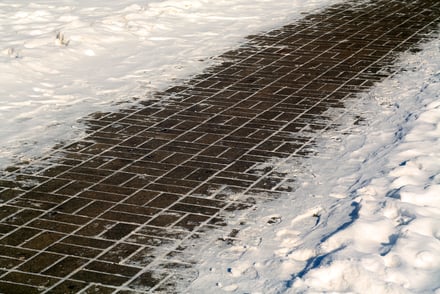The enduring exterior brickwork of the Washington DC area's 100-year-old brick homes conveys a rich sense of history. According to experts, the durability of the brick and masonry facades depends primarily on its resistance to water penetration. Owners of these historic brick homes should become familiar with the signs of water damage and when to schedule necessary repairs.
Is It Possible to Avoid Water Damage?
Brick and mortar are porous, not water resistant. If water penetrates and is subject to freeze-thaw cycles, deterioration will follow. Water and frost are the enemies of the DC brick and masonry facades and will, given time, eventually reduce it to a pile of rubble.
According to Bob Villa: Water damage is caused by one of two conditions: splash back or rising damp. In splash back, the continual beating of rain against the brick soaks into the mortar, causing the mortar joints or the bricks to crack. Rising damp results when ground water seeps up from below, leaving behind what is called a tide line. The moisture above the tide line will eventually evaporate, but the salt crystals that remain will, over time, cause the bricks and mortar to break down.
How Does Tuckpointing Brick Prevent Further Damage?
Bricks that are water-soaked are subject to further damage from freezing and thawing cycles. Early identification and repair of problems will prevent more expensive future repairs. Look for water damage to brick on an annual basis, and budget for some possible repointing (tuckpointing) every five to ten years.
Tuckpointing – sometimes called "repointing" – describes the restoration of historic brick buildings by removing mortar between masonry joints and replacing it with lime-based mortar.
Tuckpointing is necessary for places where the mortar joints have become soft or the mortar itself is cracked or damaged. The damaged mortar is removed carefully so as not to disturb the surrounding brickwork. Fresh mortar is applied in layers. When done correctly, tuckpointing will ensure the structural integrity, longevity, and value of buildings constructed of brick during the 18th, 19th, and early 20th centuries.
Renaissance Development, a leader in historic home renovation and preservation, specializes in the restoration of a historic brick building's mortar joints using traditional methods (tuckpointing) and materials. Contact us for a free site visit and project quote.
Tags:
RepairMar 22, 2016 12:06:21 PM



